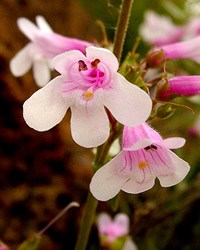
Unlike arid landscapes of the Southwest and elsewhere, the wildflowers here do not come-and-go in one dramatic spring pulse. Instead, plants stagger their blooms over the course of the warmer seasons providing a long, varying flower show that starts when the snow melts in March and lasts into September. Listed below, in order of blooming season, are some of the most common or notable species. Dates should be taken as rough guidance, since variable seasonal weather does affect when these plants bloom, and in differing ways: A late, cold spring my cause one flower to bloom profusely through mid-summer, while another may skip blooming altogether. This is not an all inclusive list: for a more complete list of plants, read the Plants of Lava Beds brochure. DO NOT PICK FLOWERS 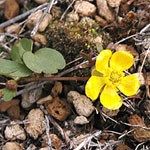
Sagebrush Buttercup Best viewed: March-April 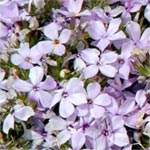
Carpet Phlox & Spreading Phlox Best viewed: April-May 
Woodland-Stars Best viewed: April-May 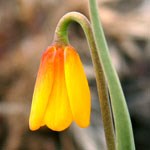
Yellow Bell / Yellow Fritillary Best viewed: Late April-May 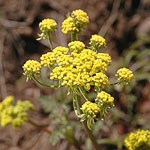
Biscuitroot Best Viewed: Late April-June 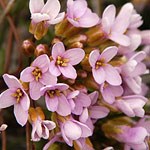
Daggerpod Best Viewed: Late May-June 
Leptodactylon pungens
Best viewed: May-June
Habitat: rocky outcrops
Flower size: 1 inch long
Type: perennial
Notes: white flowers open at night to attract moths
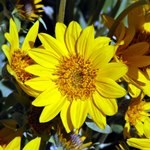
Arrowleaf balsamroot Best viewed: May-June
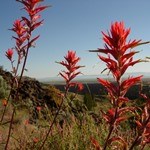
Desert Indian Paintbrush Best viewed: May-June 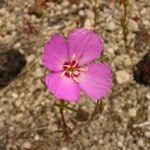
Winecup Clarkia Best viewed: May-June
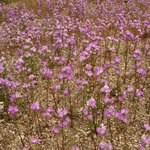
Phacelia linearis Best viewed: May-July
Habitat: sagebrush
Flower size: 1/2 inch wide Type: annual 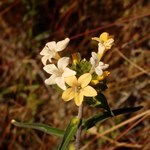
Collomia grandiflora Best viewed: May-August
Habitat: open slopes, shrubland
Flower size: 1 inch long
Type: annual
Notes: occasionally seen in open areas in northern portion; often abundant after fires
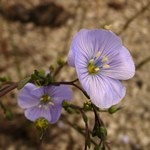
Linum lewisii Best viewed: May-August
Habitat: slopes and ridges in Pinyon-Juniper woodland
Flower size: 6-15 mm
Type: perennial
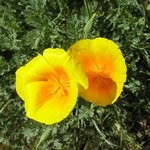
Eschscholzia californica Best viewed: May-August
Habitat: Common in gravel or pumice areas throughout monument
Flower size: 1-5 dm
Type: perennial, sometimes annual
Notes: official state flower of California
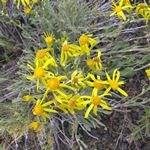
Crepis acuminata Best viewed: June-July
Habitat: shrublands and open ponderosa pine forest
Flower size: 1/4 inch wide
Type: perennial
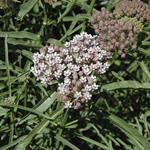
Asclepias fascicularis Best viewed: June-August
Habitat: dry, flat slopes and common along road shoulder
Flower size: 1/3 inch
Type: perennial
Notes: umbel-like clusters of gray-pink or rose flowers
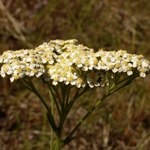
Achillea millefolium Best viewed: June-August
Habitat: Dry to moist, open, disturbed areas
Flower size: 1/3 inch
Type: perennial
Notes: Has medicinal use. Flower heads are flat-topped clusters.
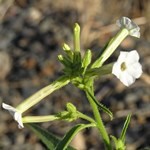
Nicotiana attenuata Best viewed: June-August
Habitat: dry, open areas; common along roads or burned areas
Flower size: 2.5-4.5 cm
Type: annual to biennial
Notes: can be toxic to livestock and other animals
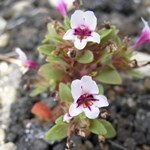
Mimulus nanus Best viewed: June-August
Habitat: dry pumice or gravelly soil
Flower size: 1/3 inch
Type: annual
Notes: occurs in loose pumice
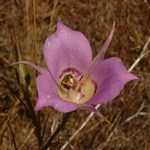
Calochortus macrocarpus Best viewed: July-August
Habitat: sagebrush scrub and slopes
Flower size: 1 1/2-2 inches wide
Type: perennial
Notes: Mariposa is butterfly in Spanish
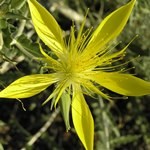
Mentzeila laevicaulis Best viewed: June-October
Habitat: shrublands and open forest
Flower size: 2-6 inches
Type: biennial or perennial
Notes: often seen on slopes and along road
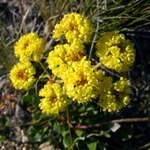
Eriogonum umbellatum Best viewed: June-September
Habitat: widespread; common in open sites
Flower size: 1 inch wide umbels on stems 5-10 inches long
Type: perennial
Notes: bright yellow flowers
|
Last updated: December 14, 2015
